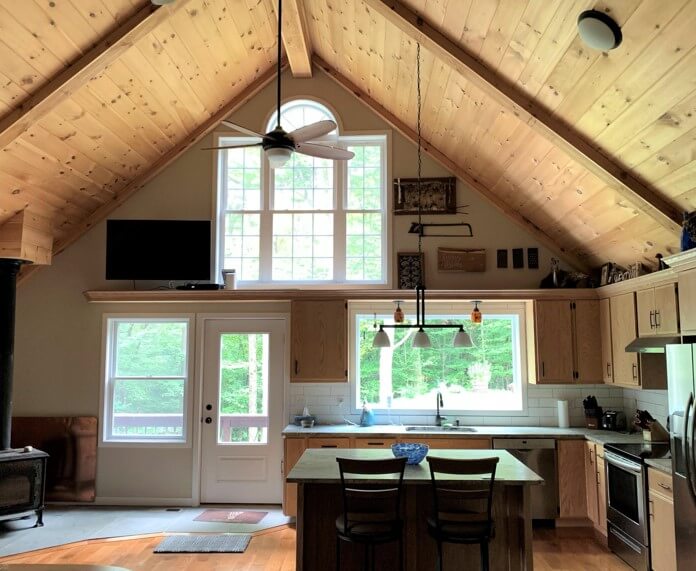
Navigating the addiction treatment landscape for your loved one can be tricky. As the opioid epidemic continues, the addiction industry has transformed into a marketplace of buyers and sellers where often times those in need receive the short end of the stick due to lack of information. If this is your first go around, you will undoubtedly hear a variety of sober living and after-care options that may all sound the same. But in fact, each resource has its own distinct characteristics that may or may not be applicable to your loved one. If you are not caught up on what each program can offer, your family may be taken advantage by those looking to make a buck.
The Different Types of Sober Living Programs
But don’t worry! We are here to help you. Courtesy of our Executive Director, we have created a cheat sheet of particular aftercare options along with their pros and cons. Remember: you do not need to figure this out on your own!
1. Sober Living/Sober House/Sober Living House
Description: This is a home, apartment, condo or other form of gender-specific group housing that is provided to recovering addicts and alcoholics as an illicit substance-free living environment. These residences are not licensed treatment facilities, nor do they provide clinical and/or medical services. They typically require a “program fee” or “rent” based upon the unit itself, geographic location, and potential recovery support services provided. The rent or program fee of sober living is an out-of-pocket expense and not reimbursable by insurance unless it is a licensed state-run halfway house. The operator of the sober living may own the sober living homes or a business may own the property and rent it to the operator. If a resident is found using drugs or alcohol, or violating other house rules, they may be asked to leave and return to an addiction treatment center.
Pros and Cons of Sober Living
Pros: Sober living can be incredibly beneficial to those in early recovery who desire a sense of belonging and need a change of environment. These homes facilitate peer support as addicts and alcoholics begin the process of getting back on their feet. A drug/alcohol-free environment in early recovery plays a large role in one staying sober.
Cons: These residences typically lack a formal hierarchy and a high level of structure and accountability. Although cost-friendly, standard sober living homes only require residents to remain abstinent and pay rent and do not inspire the residents to push themselves in their 12-Step Fellowship Program or life skill acquisition. In addition, there is typically little-to-no contact between the owner and the house’s residents following admission.
2. Structured Sober Living/Recovery Residence
Description: These residences typically showcase an owner that is involved in day-to-day operations as well as a house manager that lives in the house and provides a level of accountability and support. The owner or house manager will guide residents throughout the process and offer support as needed. Residents will attend some clinical services (such as IOP or individual therapy) in the early stages of admission. Through following house rules and guidelines and attending 12-Step Fellowship meetings, residents will eventually seek employment, learn independent living skills, and transition into less structured or basic sober living.
Pros: Structured Sober Living programs will have the highest level of structure and accountability for residents following inpatient addiction treatment. Residents will not only live in a drug/alcohol free environment, but learn the necessary skills to maintain long-term sobriety an independence. These residences will have full-time staff to track progress and maintain contact with family members on the status of their loved one.
Cons: These residences will be more costly than basic sober living homes. Under current regulations, structured sober living homes are not covered by insurance. Until something changes, prospective families are required to pay out of pocket or receive scholarship/financial aid assistance.
3. Oxford House
Description: A democratically peer-run, self-supporting drug-free home. An Oxford house’s typical capacity ranges between 6-15 residents and is a relatively inexpensive housing resource for people in recovery. Residents are required to pay a 2-week security deposit and the first week’s rent. Rent is paid weekly and covers the cost of the bed and basic bills, such as utilities and cable. Each Oxford house falls under the umbrella of a Chapter, which consists of multiple Oxford houses close in proximity. On a monthly basis, each house sends a member for its Chapter meeting to discuss and vote on any changes in regulation, budgeting issues, and larger administrative concerns. Oxford houses are not overseen by any manager or operator and are under the care of each resident’s own accountability.
Pros: Like sober living homes, Oxford houses provide a cost-friendly resource for an alcohol/drug free environment following addiction treatment. Each resident learns how to contribute to the whole of the group and participate in house-wide democratic decision making processes.
Cons: The peer-run model of Oxford Houses (and for that matter sober living homes) has been under intense scrutiny over the last few years when considering the effectiveness and overall safety of the residence. With no credentialed house manager on-site, residents can typically fly under the radar with no consequences. As long as the resident is paying rent, curfews and rules surrounding meeting attendance are often ignored, living conditions can be unkempt, and drug-use can fall through the cracks.
4. PHP- Partial Hospitalization Program
Description: PHP is considered a lower level of care than your traditional inpatient residential treatment center. These outpatient clinical treatment services are provided for between 5-6 days per week, for 5-6 per days, for approximately 30 days. A client will arrive at the office in the morning, attend clinical services throughout the day, and leave in the evening. Services found at a PHP typically consists of group counseling sessions and individual therapy. PHP’s are usually insurance-based services and are reimbursed.
Pros: PHP is a cost-effective resource for those who do not have the financial means to attend inpatient treatment. Clients can foster relationships with their counselors on a daily basis and create friendships with those in the program. PHP also creates an alcohol/drug free environment for clients 9am-5pm during early recovery.
Cons: PHP is continued a tool, but not an ultimate solution for long-term recovery. Under-qualified counselors and intermittent drug tests are often voiced as concerns for solely relying on a PHP program to achieve sobriety.
5. Intensive Outpatient Services- IOP
Description: An IOP program resembles a PHP except for a few stark differences. IOP clinical services meet only for 9 hours per week- typically 3 days per week for 3 hours per sessions. Services include group counseling and individual therapy.
Pros: I CANT THINK OF ANY
Cons: IOP programs are often the preferred choice of individuals coming out of inpatient treatment because they are able to live at home and return to their old friends and profession. Unfortunately, most IOP’s are a “temporary bandaid” with surface-level counseling, rudimentary drug tests, and lack of accountability.
The Pros and Cons of Sober Are Important to Know
Let our team help you find the recovery program that is right for you. Give us a call for immediate assistance.




